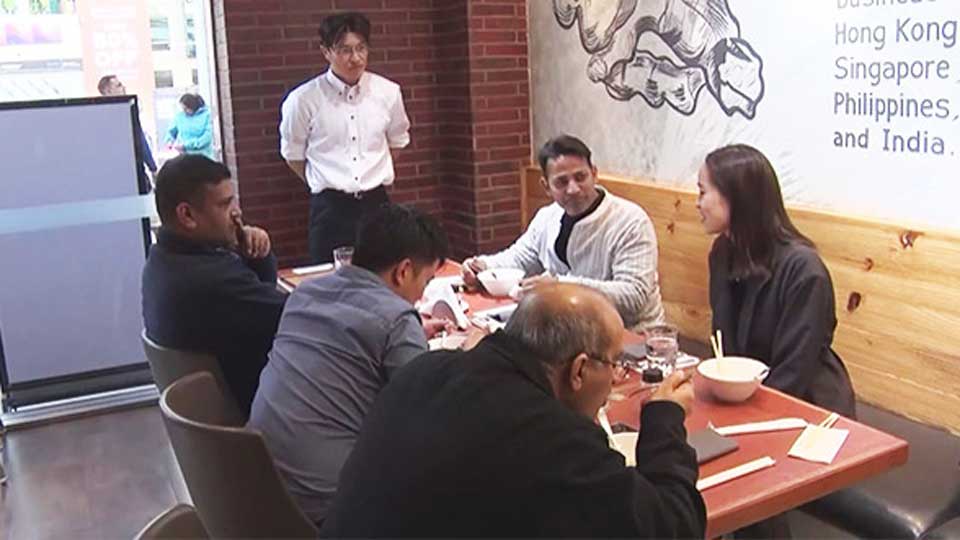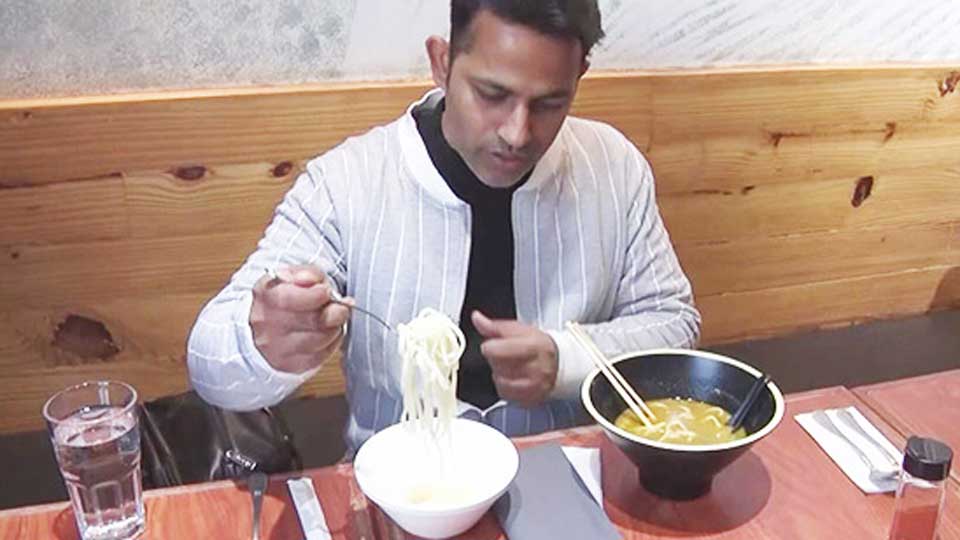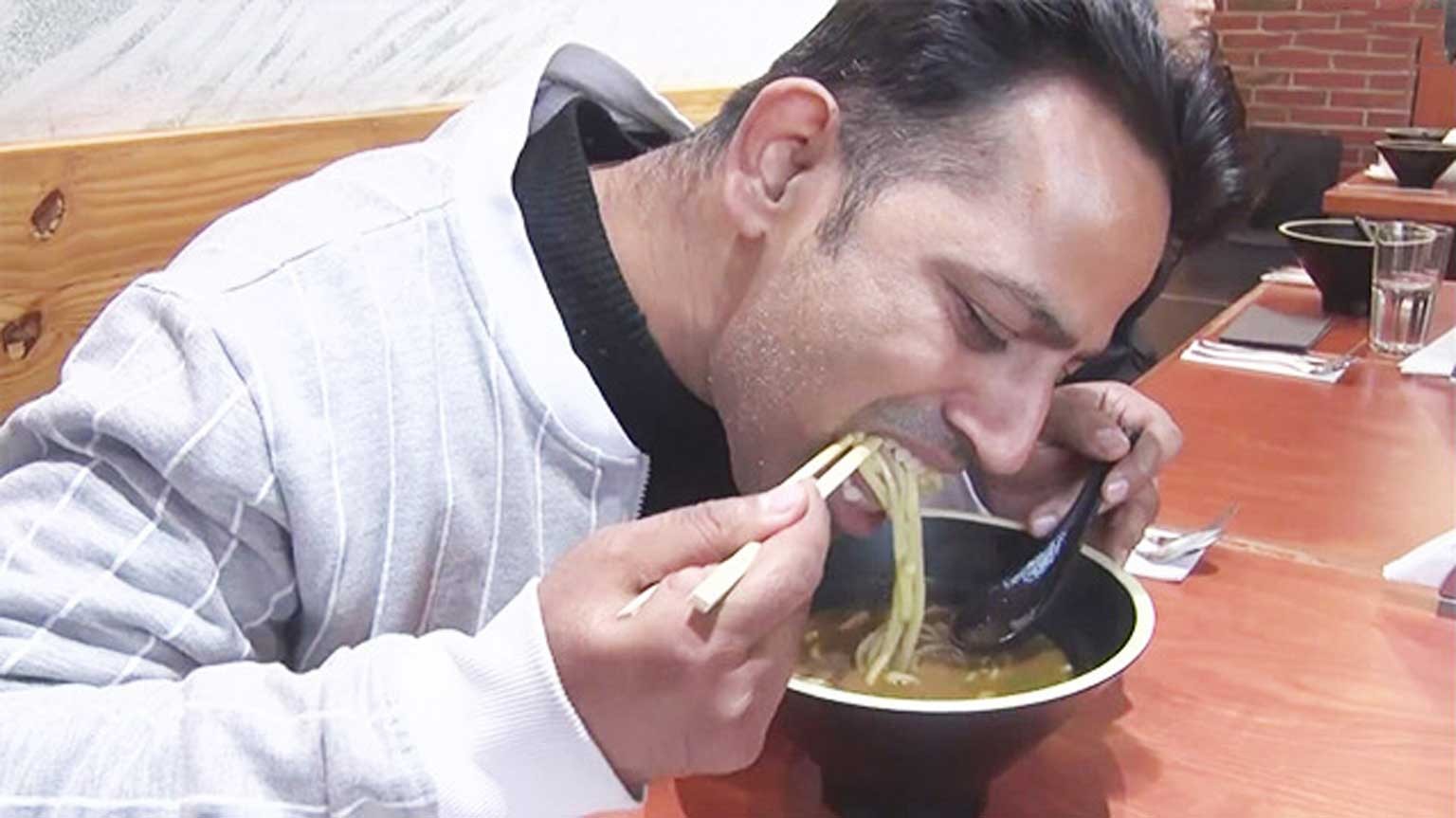Fair to say Indians are pretty familiar with curry, but less so when it's served with thick and chewy Japanese noodles. Still, that's exactly what was on the menu at a recent tasting event in Gurgaon, a thriving city neighboring New Delhi.

All about the koshi
The guests, mostly local restaurant owners and businesspeople, had been invited to sample Sanuki udon ― a specialty of Kagawa Prefecture in Japan's southwestern island of Shikoku.
The wheat-based noodles are famed for their firm, elastic texture known as koshi in local parlance.
Officials from Kagawa-based company Ishimaru Seimen held the event at a branch of Japanese curry chain Coco Ichibanya, which entered the Indian market three years ago.

Ishimaru Seimen's sales manager, Ishimaru Masakuni, was keen to get as much feedback as possible. One guest who sampled curry udon, a well-loved dish in Japan, said the noodles had a nice texture, unlike the dry ones he'd eaten in the past. He added that it was his first time to eat such chewy udon.

The event shed light on some interesting cultural differences, especially when the noodles had been firmed in cold water after boiling. The style is known as zaru udon in Japan, and they typically come with a dipping sauce.
Ishimaru says the koshi texture becomes more apparent that way ― but in India, that might not be to everyone's liking. One guest said the noodles tasted al dente, adding that some people may think they are undercooked.

Local industry under threat
Back in Kagawa, the noodle industry is going through a bad patch. Japanese government research suggests households in Takamatsu, the prefecture's main city, spent about 12 percent less at udon and soba restaurants between 2020 and 2021.
The situation has forced many local wheat producers to reassess their inventories, and some say they will have no choice but to reduce output if things don't pick up soon.
Authorities encourage exports
To turn the situation around, the prefectural government has been urging local companies to increase exports. Ishimaru Seimen is taking heed, and senior officials believe India ― now estimated to be the world's most populous country ― has huge potential.

"I thought Indians may not be ready to accept our koshi noodles," says Ishimaru. "We still need to think about how best to serve udon here at low cost."
It was Ishimaru's first visit to India, and he arrived with a packed agenda. At another tasting event in a New Delhi hotel, one guest suggested people would prefer Sanuki udon stir-fried with vegetables and other ingredients.
And at a cooking school, Ishimaru served noodles in soy sauce after they had been firmed in cold water. One guest proposed using a sauce made with Indian ingredients instead.
All the feedback is providing plenty of food for thought. And Ishimaru now believes Sanuki udon could be a hit with younger people across India's large cities.
Innovation, and a little patience
Ishimaru has been relaying those findings to his colleagues. One staffer said success will come by finding a way for Indians to accept the koshi texture. Another suggested patience will be key, given that it took a whole decade to get noodle-loving Taiwan hooked on the joys of cold udon.
The officials at Ishimaru Seimen want to strengthen ties with other companies developing Japanese restaurants in India, with a view to starting trial sales this year.
But right now, their work is all about experimenting with different ways to serve Kagawa's famous udon. Whether topped with curry or prepped like pasta, anything goes ― until they find the winning formula.

